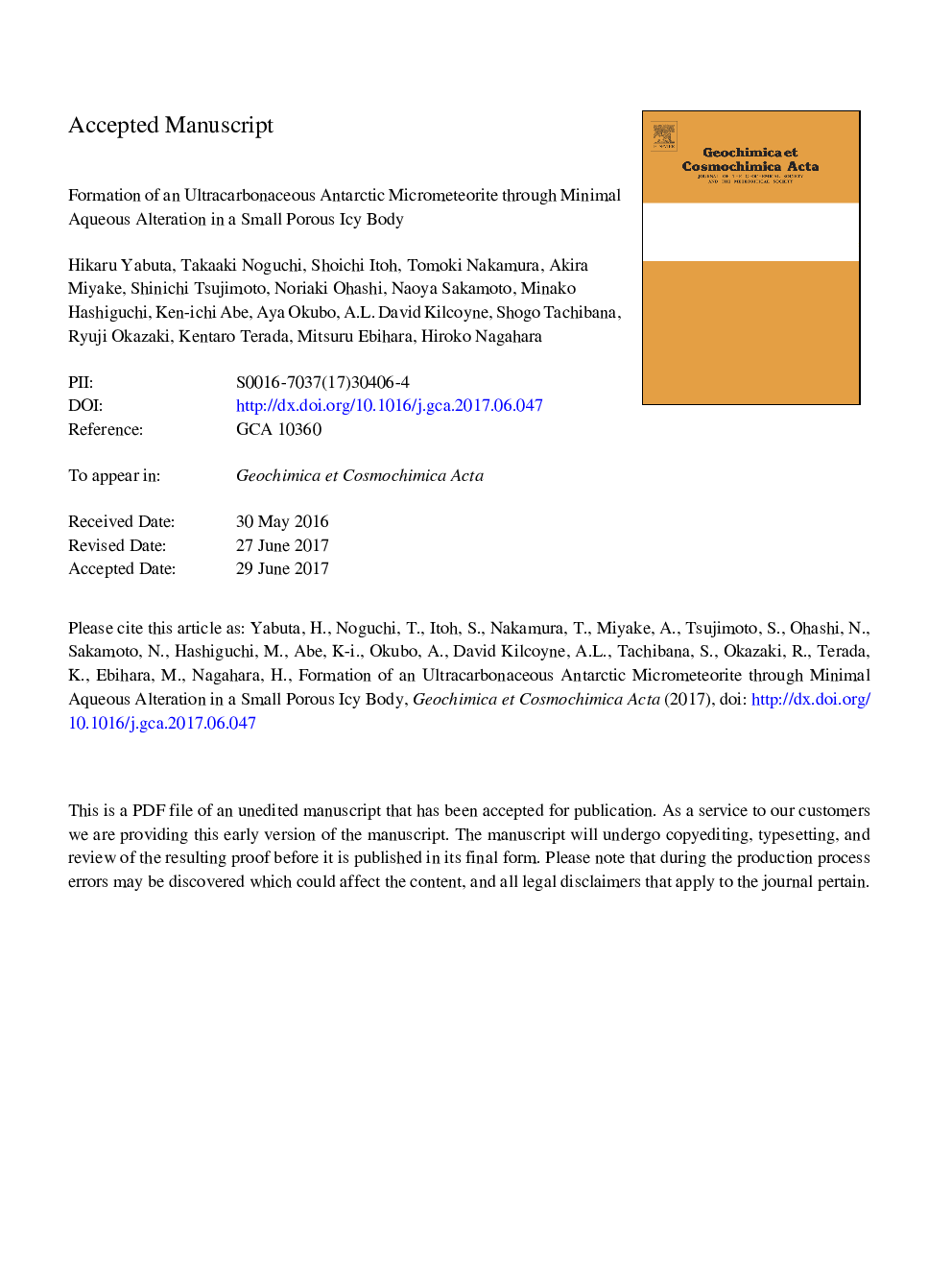| Article ID | Journal | Published Year | Pages | File Type |
|---|---|---|---|---|
| 5783141 | Geochimica et Cosmochimica Acta | 2017 | 71 Pages |
Abstract
Interstellar photochemistry alone would not be sufficient to explain the N/C ratio of the UCAMM organics; therefore, we suggest that a very small amount of fluid on a comet must have been necessary for the formation of the UCAMM. The GEMS grains depleted in Mg and S in the UCAMM prove a very weak degree of aqueous alteration; weaker than that of carbonaceous chondrites. Short-duration weak alteration probably caused by planetesimal shock locally melted cometary ice grains and released water that dissolved the organics; the fluid would likely have not mobilized because of the very low thermal conductivity of the porous icy body. This event allowed the formation of the large organic puddle of the UCAMM, as well as organic matter sulfurization, formation of thin membrane-like layers of minerals, and deformation of organic nanoglobules.
Related Topics
Physical Sciences and Engineering
Earth and Planetary Sciences
Geochemistry and Petrology
Authors
Hikaru Yabuta, Takaaki Noguchi, Shoichi Itoh, Tomoki Nakamura, Akira Miyake, Shinichi Tsujimoto, Noriaki Ohashi, Naoya Sakamoto, Minako Hashiguchi, Ken-ichi Abe, Aya Okubo, A.L. David Kilcoyne, Shogo Tachibana, Ryuji Okazaki, Kentaro Terada,
